
Project ACE:
Bringing cultural competence to healthcare via Access, Communication and Experience.
—
Research, research and more research ... that was my motto for this class. I had become engulfed in the world of US healthcare. Using my state, New Jersey, and local hospitals as the base for my research, I learned that it was the first state to pass a cultural competence law for all state hospitals. This is a huge deal considering the diverse population in New Jersey that has been rapidly increasing. Cultural competence is being aware, receptive and understanding to cultures other than one’s own. It would be easy to simply mandate that all patients speak English in order to interact with the hospital, but that is not the case. Hospitals are learning to adapt to their patients. My goal was to take an existing hospital and make it more accessible to non-English speaking patients. With the high number of Spanish and Chinese-speaking population in New Jersey, I planned to focus on these two languages along with English as a means of communication. What I noticed was that the hospitals seem to do the minimum as far as signage is concerned. It relied heavily on security and staff to help patients who were not native speakers of English. This to me seemed ineffective and taxing on the staff. How could I make it easier for everyone?
What I devised is a system that concentrates on touch points. I labeled this system of touch points “Project ACE.” ACE stands for Access, Communication, and Experience: these are the pillars to making patients feel more comfortable. Touch points are locations/people either surrounding or inside the hospital that help patients navigate a possibly confusing and intimidating hospital environment.
My system of touch points would help patients locate the hospital from key areas around the neighborhood. Signage would be placed in conjunction with other navigational signs, creating a path toward the hospital. The sign would use the universal “H” symbol denoting hospital and also include arrows and Chinese characters to show direction. Once inside the hospital, other touch points would be highly visible to help incoming patients. Multi-lingual touchscreens and signs around the hospital would make patients more at ease with their surroundings. The Information desk would have signs, brochures and staff willing to help patients. The elevator would have signage that would also be multilingual. Patients would feel as if the hospital, doctors, and nurses truly care about giving them excellent care and support.
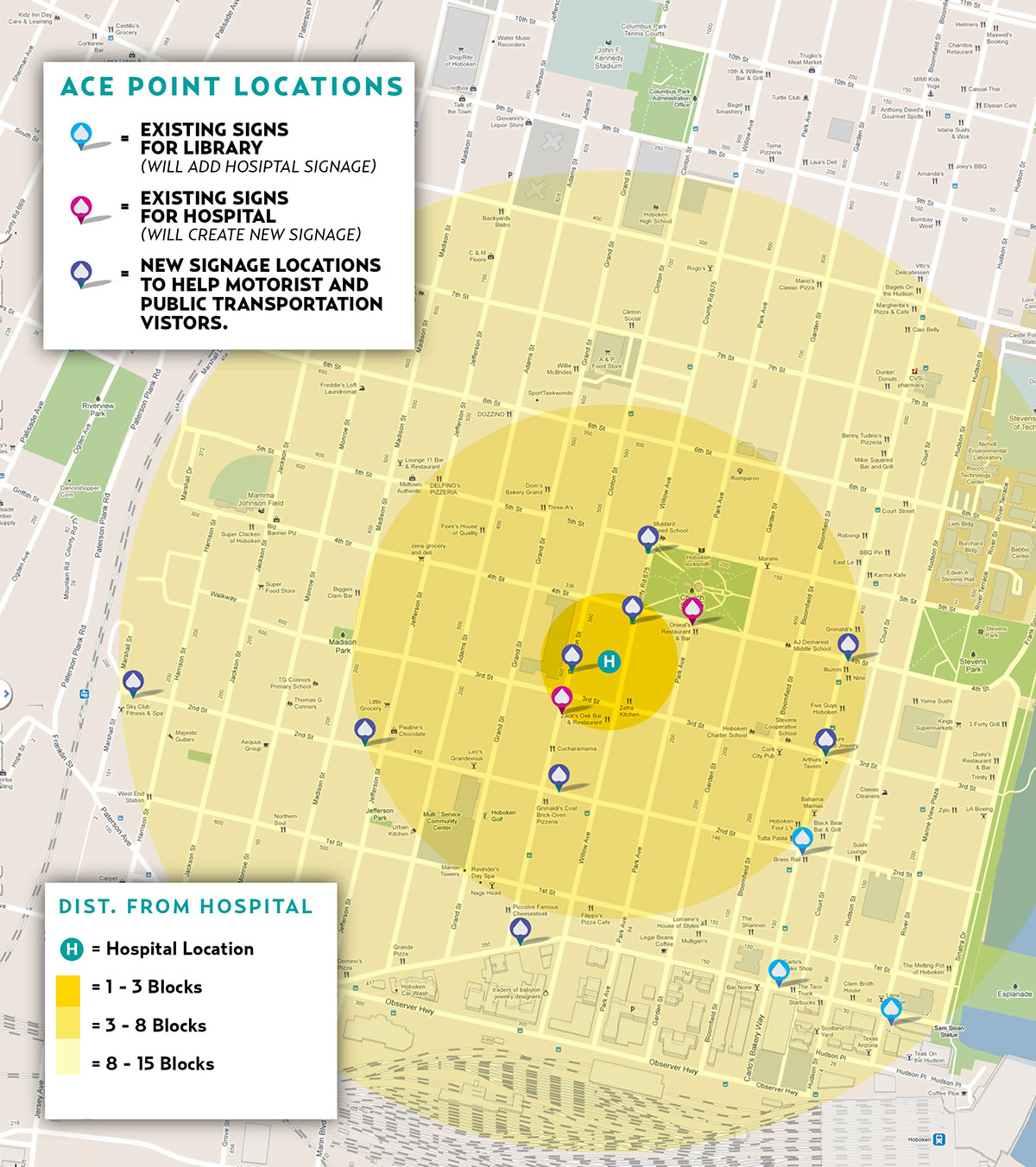
What are ACE points? They are specific touch points used to guide, inform and education visitors on how to better understand the hospital and navigate it. There are various access, communication or point of experience that will help any visitor have a positive interaction with the hospital. ACE points will have internal as well as external functions. These ACE points will serve as means of assisting visitors with language barriers and helping them get around.


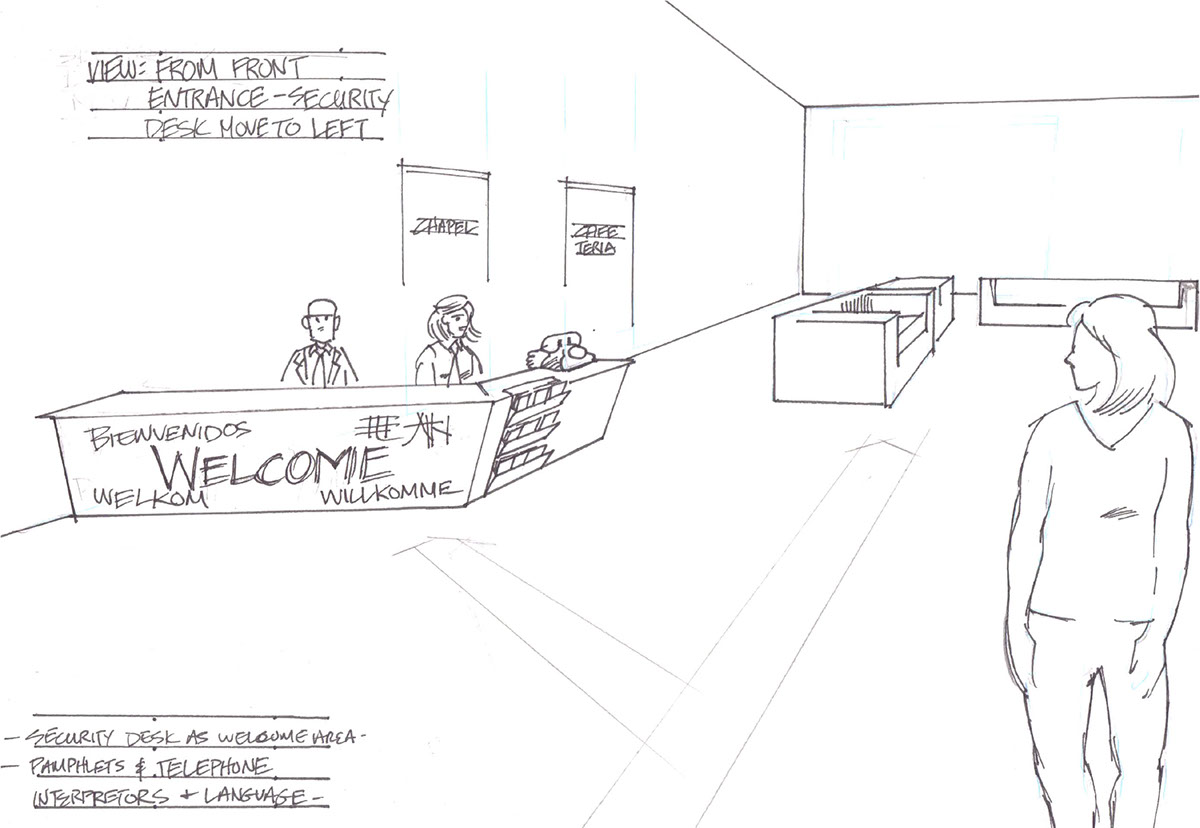
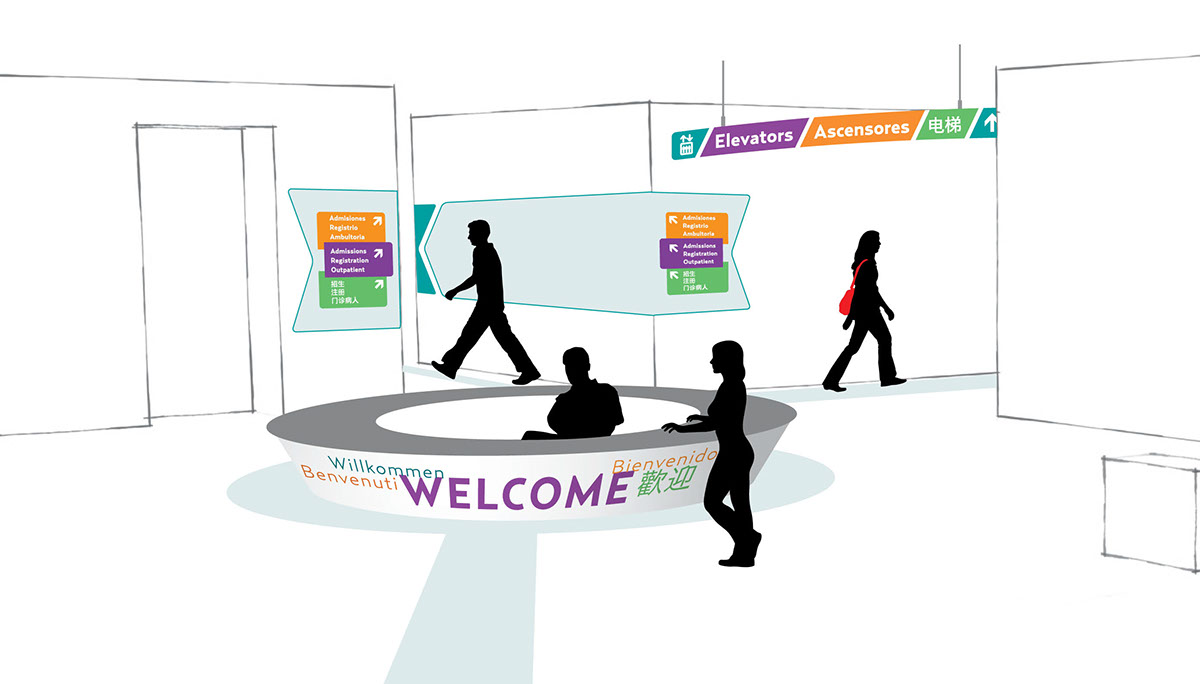
View: Main Lobby
Repositioning of security desk. Making it the focal point of the lobby and referring to it as the “Welcome Desk” or “Help Desk.” Also the desk with include multilingual medical pamphlets and interpreters hot line to help assist any visitors.
Repositioning of security desk. Making it the focal point of the lobby and referring to it as the “Welcome Desk” or “Help Desk.” Also the desk with include multilingual medical pamphlets and interpreters hot line to help assist any visitors.
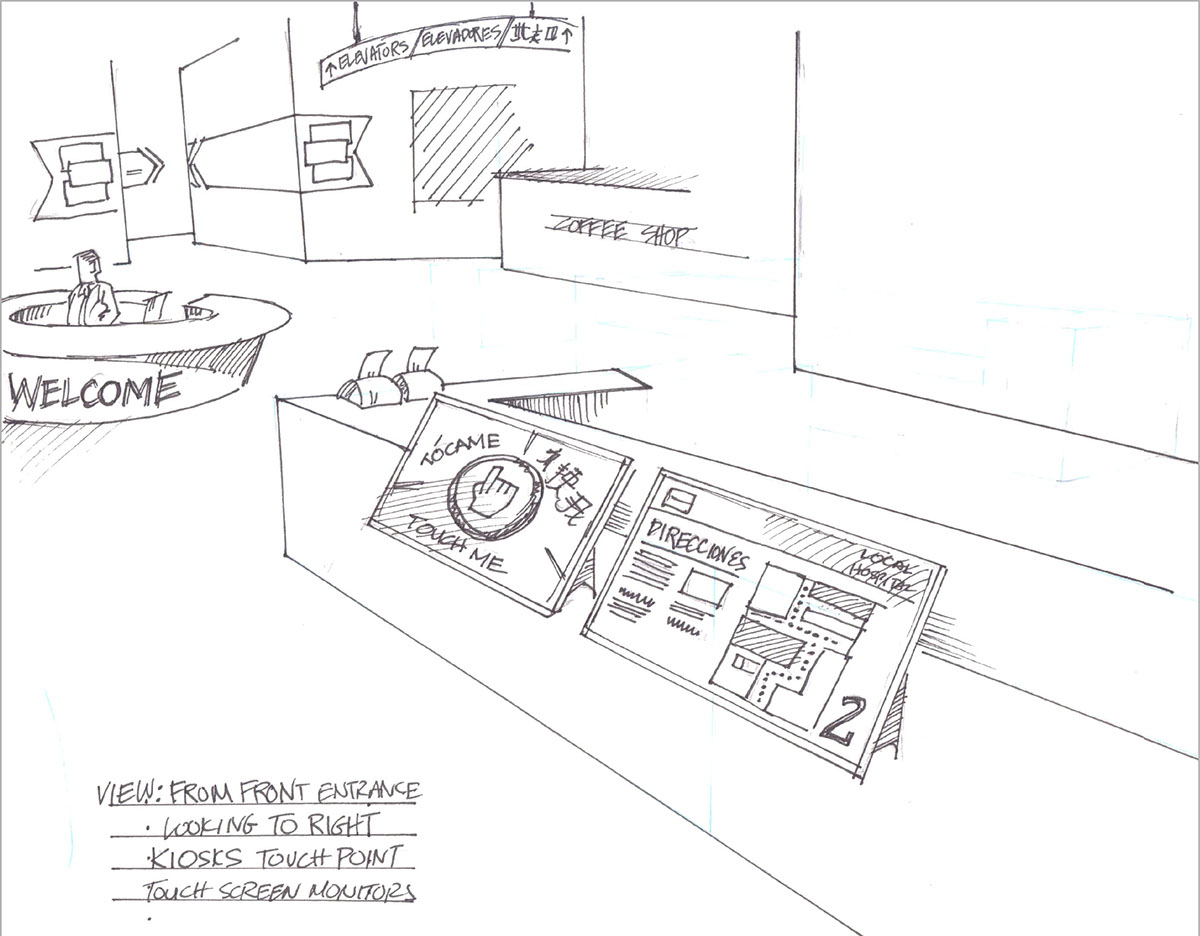
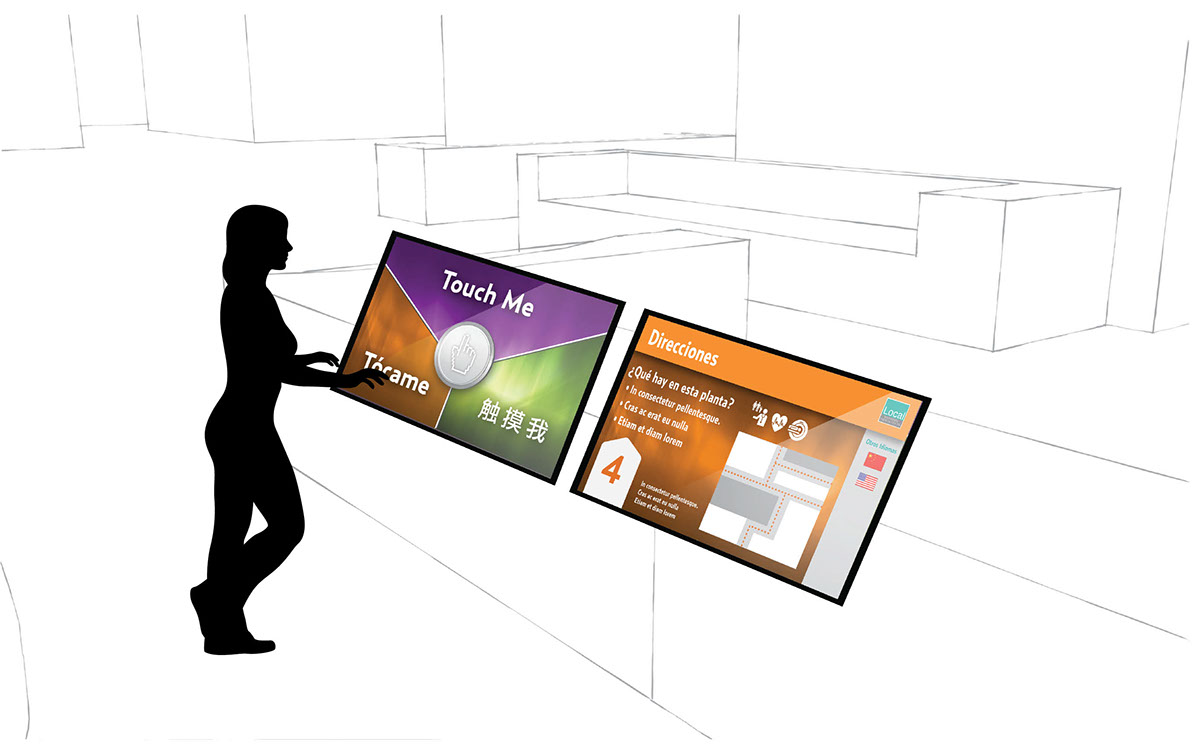
View: Front Entrance
Addition of multilingual touch screen to help both English and non-english speaking visitors find their way
Addition of multilingual touch screen to help both English and non-english speaking visitors find their way
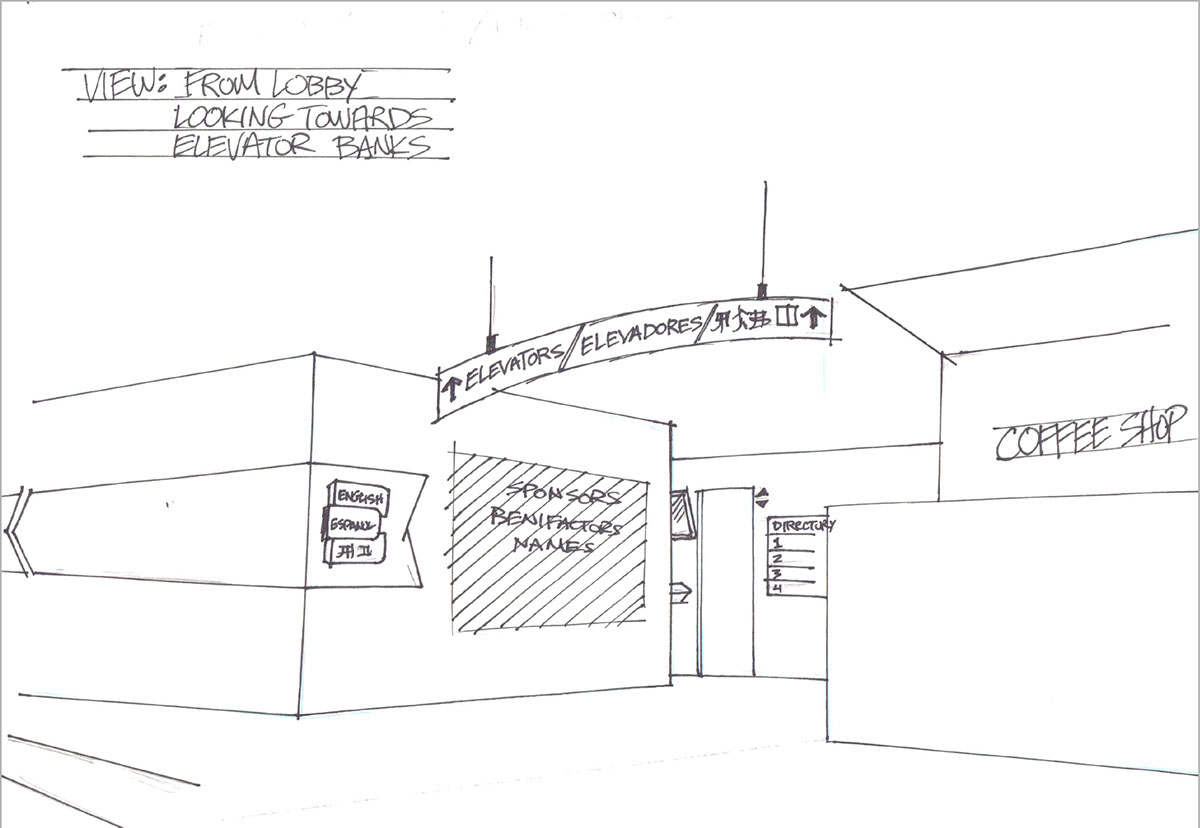
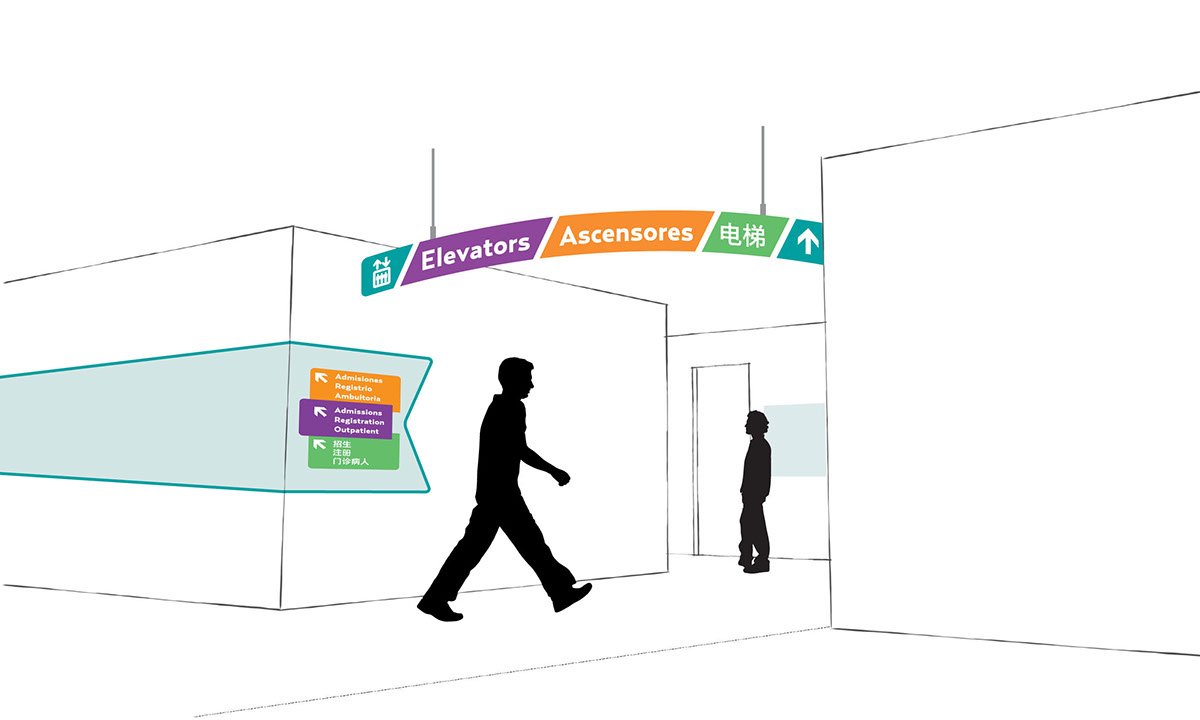
View: Main Lobby toward Elevators
Addition of overhead way-finding to direct visitors toward elevator banks
Addition of overhead way-finding to direct visitors toward elevator banks

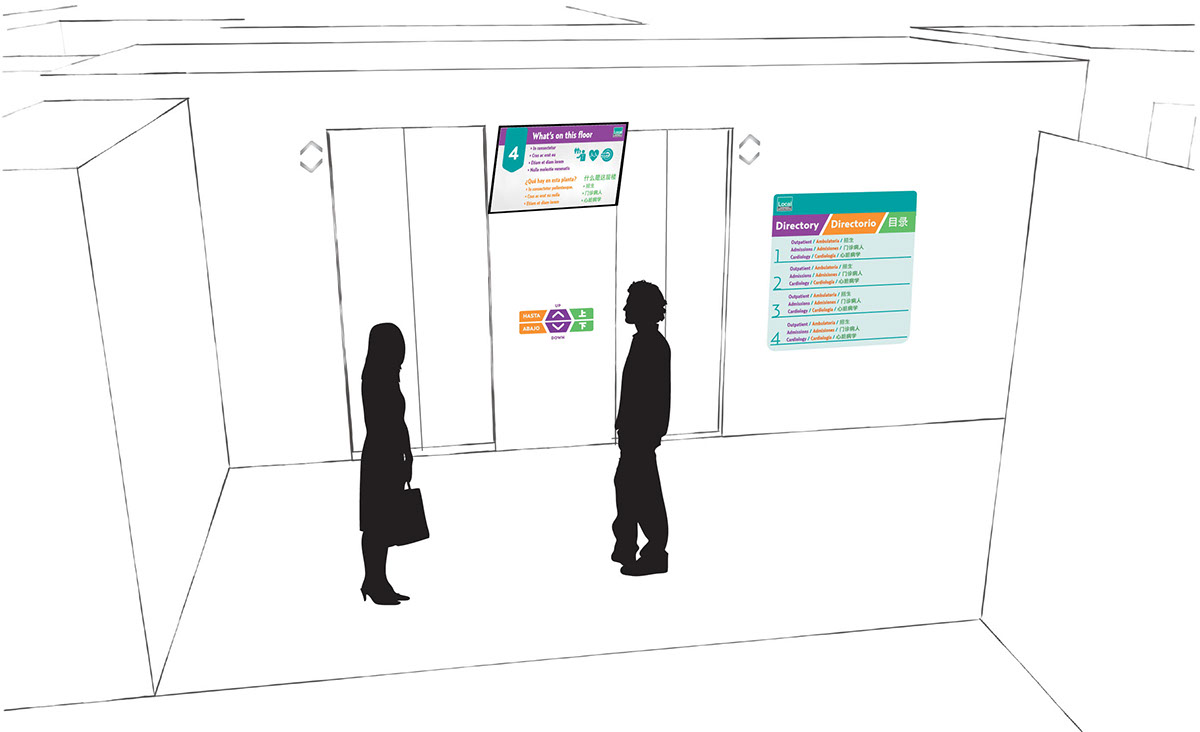
View: Elevator Banks
Re-Establishing the elevator area as an informational area. Adding
multilingual directions arrows, a floor directory and an overhead monitor to help visitors learn about the many facets and services with in hospital.
Re-Establishing the elevator area as an informational area. Adding
multilingual directions arrows, a floor directory and an overhead monitor to help visitors learn about the many facets and services with in hospital.

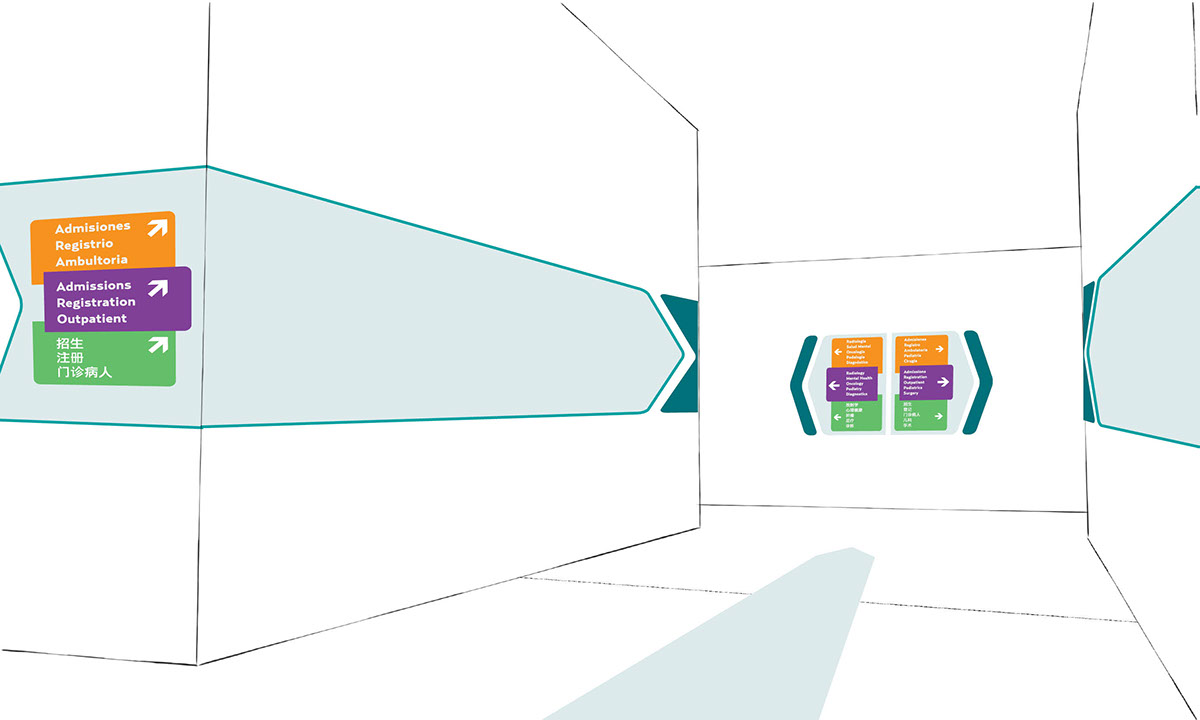
View: Side-View Main Hallway
Establishing visual directional guides and add multilingual signage.
Establishing visual directional guides and add multilingual signage.
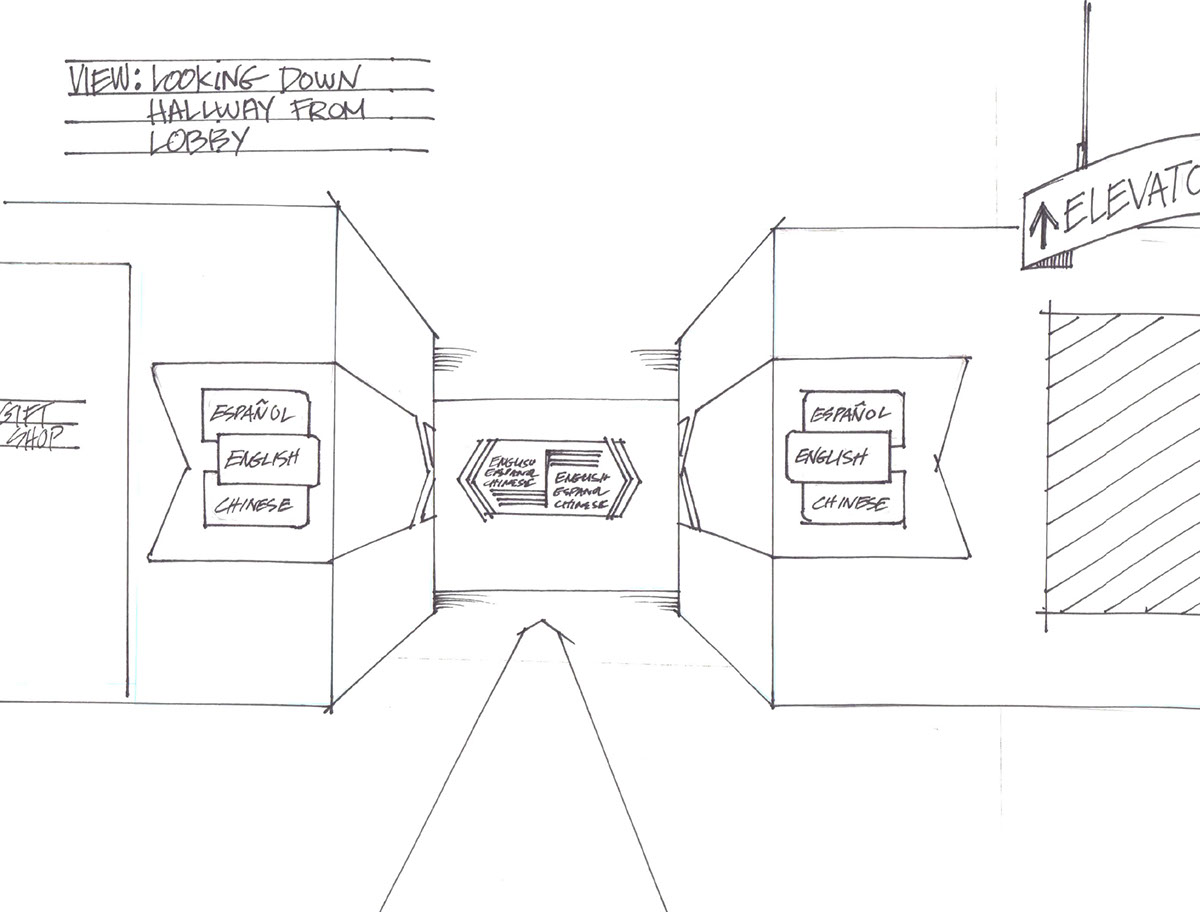
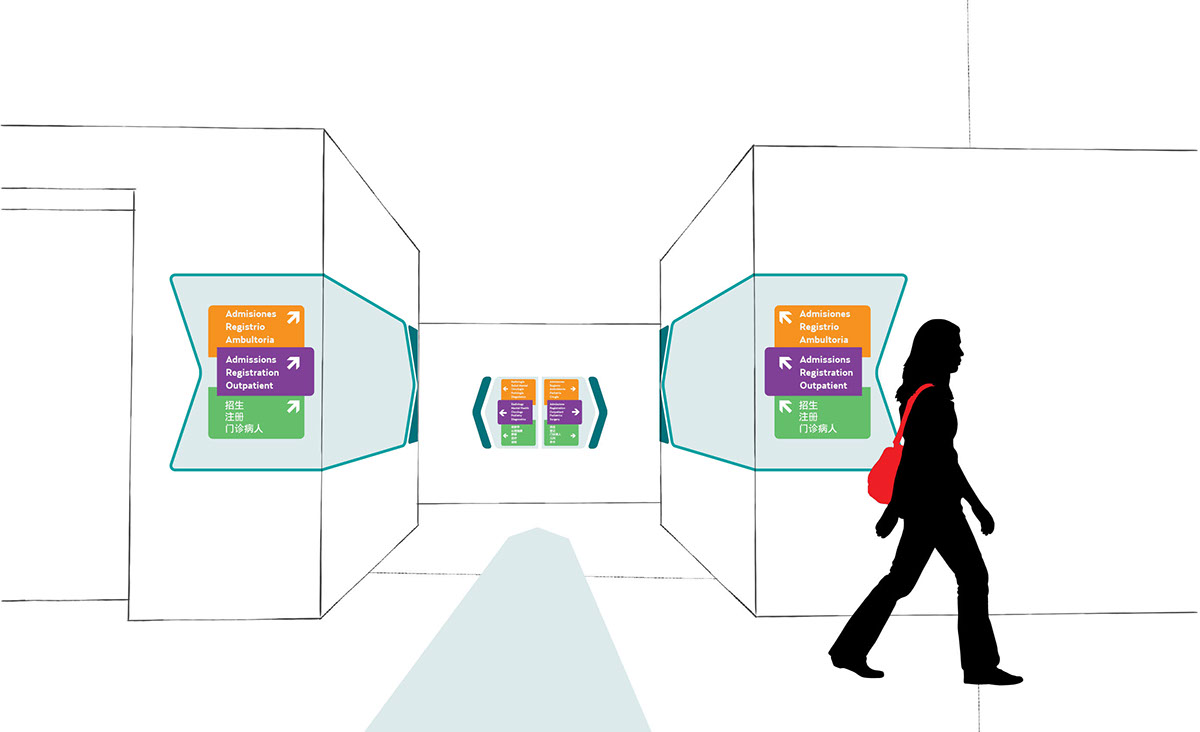
View: Main Hallway
Establish a visual directional guide and create a multilingual color system that is easily recognizable. Have main access point in three main languages of English, Spanish and Chinese.
Establish a visual directional guide and create a multilingual color system that is easily recognizable. Have main access point in three main languages of English, Spanish and Chinese.


